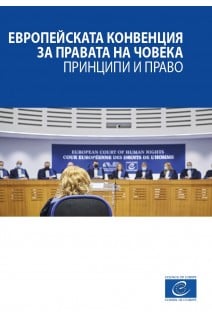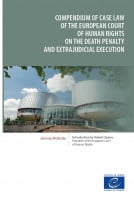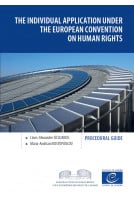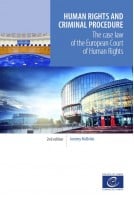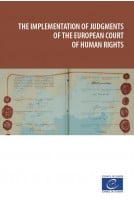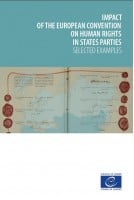ForewordPrefaceTerminology, references and abbreviationsChapter 1. Introduction to the European Convention on Human RightsI. Background
II. The substantive guarantee
III. The interpretation of the Convention
IV. Negative and positive obligations
V. Reservations
VI. The "jurisdiction" of the Court
Further reading
Chapter 2. The right to life and abolition of the death penaltyI. Introduction
II. The obligation to protect the right to life
III. The prohibition on taking life by the use of force
IV. Contemporary and future issues
Further reading
Chapter 3. Freedom from torture and other forms of ill-treatmentI. Introduction
II. Conduct falling within Article 3
III. Torture
IV. Inhuman treatment
V. Inhuman punishment
VI. Degrading treatment
VII. Degrading punishment
VIII. Different contexts for ill-treatment
IX. Positive obligations
X. Contemporary and future issues
Further reading
Chapter 4. The prohibition on slavery and related practicesI. Introduction
II. The structure of Article 4
III. The substantive scope of Article 4
IV. Positive obligations
V. Contemporary and future issues
Further reading
Chapter 5. The right to liberty and security of person and freedom from imprisonment for non-payment of a contractual obligationI. Introduction
II. The meaning of "deprivation" of liberty
III. Lawfulness and protection from arbitrariness
IV. Grounds for permissible detention under Article 5(1)
V. Procedural safeguards
VI. Compensation for unlawful detention: Article 5(5)
VII. Article 1 of Protocol No. 4: prohibition of imprisonment for debt
VIII. Contemporary and future issues
Further reading
Chapter 6. The right to a fair hearing and other procedural safeguards in criminal proceedingsI. Introduction
II. The logic and structure of Article 6
III. General considerations under Article 6
IV. The concept of "criminal charge"
V. The existence of a "dispute over civil rights and obligations"
VI. Institutional guarantees of Article 6(1): independence, impartiality and a tribunal established by law
VII. The procedural guarantees of Article 6(1)
VIII. The presumption of innocence: Article 6(2)
IX. The minimum guarantees of a fair trial: Article 6(3)
X. Article 2 of Protocol No. 7: right of appeal in criminal matters
XI. Article 3 of Protocol No. 7: the right to compensation for wrongful conviction
XII. Article 4 of Protocol No. 7: right not to be tried or punished twice (ne bis in idem)
XIII. Contemporary and future issues
Further reading
Chapter 7. No punishment without lawI. Introduction
II. General principles of application
III. The principle of legality: nullum crimen nulla peona sine lege
IV. The principle of (non-)retroactivity of criminal law
V. The limited scope of Article 7(2)
VI. Contemporary and future issues
Further reading
Chapter 8. The right to respect for private and family life, home and correspondence; the right to marry and found a family; and equality of spousesI. Introduction
II. Four interests protected by Article 8(1)
III. Interference with rights: Article 8(2)
IV. Positive obligations
V. Procedural obligations
VI. Specific categories of cases
VII. Article 12: the right to marry and found a family
VIII. Article 5 of Protocol No. 7: equality of spouses
IX. Contemporary and future issues
Further reading
Chapter 9. Freedom of thought, conscience and religionI. Introduction
II. The scope of Article 9
III. Freedom of thought, conscience and religion
IV. Faith organisations and the state
V. Conscientious objection to military service
VI. Expulsion and freedom of religion
VII. Manifesting religion or belief in worship, teaching, practice and observance
VIII. Positive obligations
IX. Contemporary and future issues
Further reading
Chapter 10. The right to freedom of expressionI. Introduction
II. The structure of Article 10
III. The forms of expression protected under Article 10
IV. Freedom of expression and new technologies
V. Right of access to information
VI. Positive and procedural obligations
VII. Article 10 and other Convention provisions
VIII. Contemporary and future issues
Further reading
Chapter 11. Freedom of assembly and associationI. Introduction
II. Freedom of peaceful assembly
III. Freedom of association
IV. Freedom to form and join trade unions
V. Contemporary and future issues
Further reading
Chapter 12. The right to an effective remedyI. Introduction
II. General considerations under Article 13
III. Effectiveness of a remedy under Article 13
IV. Contemporary and future issues
Further reading
Chapter 13. The prohibition of discriminationI. Introduction
II. The prohibited form of discrimination
III. The structure of the Court's assessment under Article 14
IV. Article 1 of Protocol No. 12: the general prohibition of discrimination
V. Contemporary and future issues
Further reading
Chapter 14. Derogation in time of war or other public emergency threatening the life of the nationI. Introduction
II. "In time of war or other public emergency threatening the life of the nation"
III. "To the extent strictly required by the exigencies of the situation"
IV. Other international law obligations
V. The non-derogable provisions
VI. Contemporary and future issues
Further reading
Chapter 15. Limitations on rightsI. Article 16: political activities of "aliens"
II. Article 17: acts subversive of Convention rights
III. Article 18: purposes of prescribed restrictions on rights
Further reading
Chapter 16. The right to propertyI. Introduction
II. The nature of "possessions"
III. Interference with property
IV. The general rule: interference with the peaceful enjoyment of possessions
V. Deprivation of property
VI. Control of use of property
VII. The fair balance principle
VIII. Compensation
IX. Contemporary and future issues
Further reading
Chapter 17. The right to educationI. Introduction
II. No denial of the right to education
III. Respect for parents' religious and philosophical convictions
IV. Discrimination and minority rights
V. Contemporary and future issues
Further reading
Chapter 18. The right to free electionsI. Introduction
II. Scope of electoral rights
III. The right to vote
IV. The right to stand for election
V. The conduct and administration of elections
VI. Electoral appeals and challenges
VII. Coverage of elections
VIII. Contemporary and future issues
Further reading
Chapter 19. Freedom of movement and protection against expulsionI. Article 2 of Protocol No. 4: freedom of movement
II. Article 3 of Protocol No. 4: the right of a national not to be expelled from and to enter a state's territory
III. Article 4 of Protocol No. 4: freedom of aliens from collective expulsion
IV. Article 1 of Protocol No. 7: freedom from expulsion of individual aliens
Further reading
Appendix: List of cited cases
